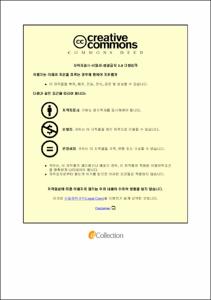Characteristics of Functional Materials Recovered from Red Macro Algae(Kappaphycus alvarezii) using Pressurized Hot Water Extraction
- Abstract
- Two strains of Kappaphycus alvarezii were treated with pressurized hot water extraction (PHWE) at conditions ranging from 150oC/1MPa - 300oC/10MPa using three different solvents including water, 1% formic acid and 1% sodium hydroxide. Hydrolysates obtained from the extraction were investigated for their hydrolysis efficiency, pH, radical scavenging activity (ABTS+ & DPPH), total phenolic content (TPC), total flavonoid content (TFC), total sugar, reducing sugar, monosaccharide composition, maillard reaction products (MRP), total protein, emulsifying properties and foaming properties. The highest hydrolysis efficiency ranged from 81.47% to 97.18% showing a consistent increase with increasing temperature and pressure conditions. Major monosaccharide compounds recovered from the hydrolysates were glucose and galactose with concentrations of 156.21mg/L and 155.49mg/L respectively. Radical scavenging activity, polyphenol content and proteins increased from 150oC/1MPa to 270oC/8MPa but decreased at 300oC/10MPa due to decomposition and protein denaturation. Foaming and emulsifying properties were influenced by variation of protein with relation to temperature and protein–polysaccharide electrostatic interactions. The best condition for all sugars and foaming properties was 150oC/1MPa, while antioxidants, TPC, TFC, total protein and emulsifying properties were best recovered at 270oC/8MPa for both strains.
Extraction of ĸ-carrageenan was carried out using a single composite function converted from optimized conditions identified for various responses. A three level Box-Behnken response surface design (BBD) for optimization was employed to investigate the impact of independent variables (responses) including temperature, pressure, solid-liquid ratio and sonication time on the extraction yield. The optimum extraction conditions were 130oC, 5MPa, 0.0063mg/mL and 20 min sonication time. From the optimum conditions, the extraction yield was 74.72% crude ĸ- carrageenan close to the predicted value of 74.02% indicating that the optimized condition was valid within the specified range of process parameters. The extracted crude ĸ-carrageenan under
the optimum condition was analyzed using FT-IR, TGA and XRD to affirm the features of ĸ- carrageenan. Physical properties including gel strength, viscosity and emulsification index of the crude ĸ-carrageenan recovered by PHWE was low compared to the conventional method. However, the antioxidant activity and purity was high due to high sulfate content and enhanced temperature employed in the extraction process. The molecular weight was reduced by thermal degradation in the PHWE process which enhanced its bioavailability and functional properties.
- Issued Date
- 2017
- Awarded Date
- 2017. 8
- Type
- Dissertation
- Publisher
- 부경대학교
- Department
- 대학원 식품공학과
- Advisor
- 전병수
- Table Of Contents
- Introduction 1
Materials and Methods 6
1. Materials 6
2. Sample preparation 6
3. Methods 7
3.1 Pressurized hot water extraction (PHWE) 7
3.2 Proximate analysis 9
3.3 Hydrolysis efficiency 9
3.4 pH measurement 10
3.5 Antioxidant activity 10
3.5.1 DPPH assay 10
3.5.2 ABTS+assay 11
3.5.3 Assay of total phenolic content 12
3.5.4 Assay of total flavonoid content 12
3.6 Total sugars 12
3.7 Reducing sugar 13
3.8 Monosaccharide composition 14
3.9 Maillard reaction product determination 14
3.10 Total protein 14
3.11 Emulsification properties 15
3.12 Foaming properties 16
3.13 Extraction of ĸ-carrageenan by PHWE 16
3.14 Extraction of ĸ-carrageenan by conventional method 17
3.15 Experimental design 17
3.16 Characterization 21
3.17 Physical properties of ĸ-carrageenan 21
3.18 Chemical composition of crude ĸ-carrageenan 22
3.19 Determination of molecular weight (Mw) 23
3.20 Antioxidant activity of ĸ-carrageenan 24
3.21 Statistical analysis 24
Results and Discussion 25
1. Physicochemical characteristics 25
1.1 Proximate composition showing high carbohydrate content 25
1.2 High efficiency with formic acid hydrolysis 27
1.3 Change of pH due to increasing temperature 31
2. Decreasing antioxidant activity at extreme temperatures 31
3. Sugar content 38
3.1 Decrease in total sugar and reducing sugar with increasing temperature 38
3.2 Decrease of monosaccharide composition with increasing temperature 38
4. High temperatures maximized maillard reaction product 44
5. Total protein denaturation at extreme temperatures 48
6. Emulsifying properties maximized at high temperatures 50
7. Influenced of foaming properties by protein-polysaccharide interactions 52
8. Experimental design and statistical analysis 56
8.1 Effects of temperature, pressure, SLR and sonication time on carrageenan
yield 60
8.2 Optimization of extraction conditions of crude ĸ-carrageenan 61
8.3 Validation of the optimized PHWE process 63
9. Characterization to confirm crude ĸ-carrageenan 63
10. Physical properties of crude ĸ-carrageenan 66
11. Chemical composition of crude ĸ-carrageenan comparable to standard 69
12. Decrease of molecular weight by elevated temperatures 72
13. PHWE exhibited high antioxidant activity in crude ĸ-carrageenan 72
Conclusion 75
Acknowledgement 77
References 79
- Degree
- Master
- Files in This Item:
-
-
Download
 Characteristics of Functional Materials Recovered from Red Macro Algae(Kappaphycus alvarezii) using .pdf
기타 데이터 / 3.28 MB / Adobe PDF
Characteristics of Functional Materials Recovered from Red Macro Algae(Kappaphycus alvarezii) using .pdf
기타 데이터 / 3.28 MB / Adobe PDF
-
Items in Repository are protected by copyright, with all rights reserved, unless otherwise indicated.